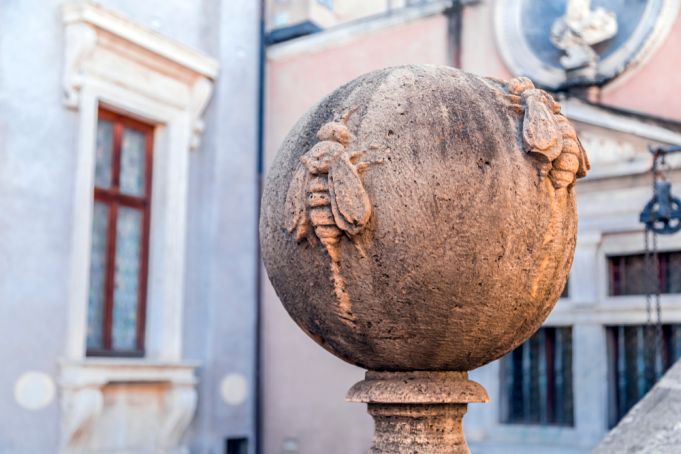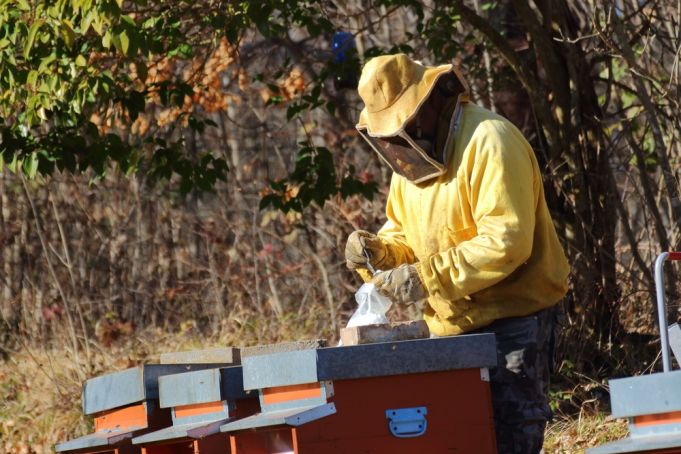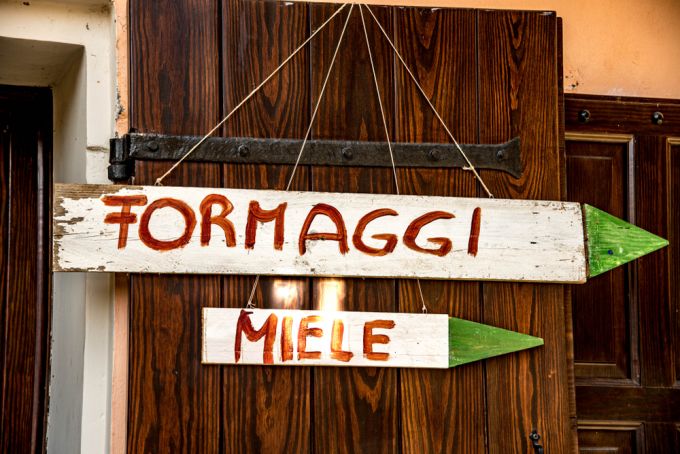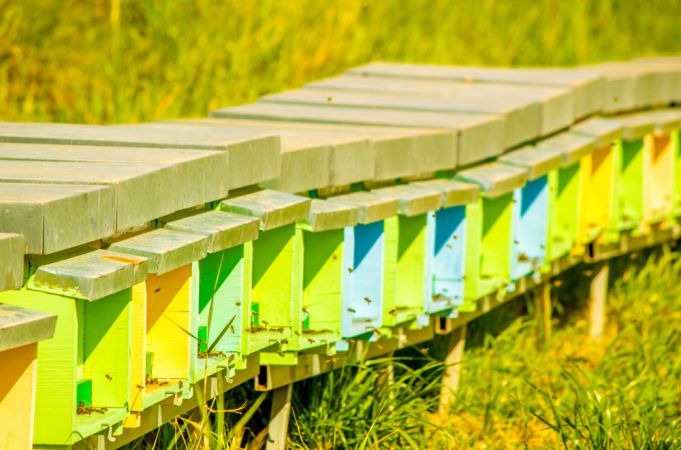Just like fine wine, Italian honey has centuries of tradition behind it.
There are more than 300 types of honey on the market in Italy with different colours and flavours depending on the plants from which the bees draw nectar.
The most common is millefiori honey, but there are also numerous varieties of mono-floral honey.
How to choose? Among the most widely used in Italian cooking is acacia honey, which has a delicate taste and is the most suitable if you do not want to cover other flavours.
Lime honey, very sweet and aromatic, is great for desserts.
Chestnut honey and strawberry tree honey, on the other hand, are rather bitter and go well with main courses of meat, charcuterie boards and cheeses.
Now that we have your mouth watering, let’s dive into Italy’s long history with honey, how the U.S. looks to Italian bees for preserving the species, and what to look for when shopping for the best honey in Italy.
The history of honey in Italy
There are numerous archaeological finds of man’s love of bees and honey from Greek and Roman times.
Thriving in a particularly industrious way, with the queen at its head, bees constitute a perfect symbol to represent kingship (think of the Barberini Bees of the powerful aristocratic family).
In ancient Rome, bee products were widely used and several testimonies highlight the various aspects of beekeeping: the collection of honeycomb from the cavity of a tree in an allegorical painting, or the stages of breeding with round beehives in evidence in the sepulchral relief of aristocrats Titus Paconius Caledus and his wife Octavia Salvia (1st century B.C.).

Bee reliefs inside medieval Castel Sant'Angelo in Rome
Places famous for their bee production lined the Mediterranean coasts and included mainly Greece, Egypt, and Sicily.
In Sicily, the first documented records of beekeeping date back to the time of the Magna Graecia. Theocritus, in 300 B.C., extolled the honey and bees of the region Ibla.
In Ibla, beekeeping was certainly important even before the Greek invasion, and it was especially so in the area of Pantalica where, from 1250 to 700 B.C., according to historians, there was the capital of the Sicilian state of the mythical Hyblon king of the bee people.
The Sicilians took from the Greeks and made the bee an object of worship. The myth of Aristeus, son of Apollo and Cyrene, who, having learned from the nymphs the art of raising bees, cultivating vines, olive trees and making cheese, spread his knowledge throughout Greece and Italy.
The myth of Aristeus is also present in Sardinia; the discovery of a bronze statuette depicting a man with his body covered with bees, a hero who taught Sardinians the cultivation of olives and vines, milk processing and beekeeping, dates back to 1843.
In Sicily, the Iblaean beekeepers proceeded to harvest without killing the bees, thanks to the particular structure of the hive that allowed them to open and extract the combs with honey while leaving the nucleus intact; similarly, in Sardinia, the hives were "emptied" before taking the combs with honey.
In the Sardinian tradition, honey extraction was done by squeezing the combs by hand or by pressing. Pressing the combs was the technique used by Sicilian beekeepers, and the resulting honey was much richer in pollen than honey.
With such a technique, considerable quantities of wax were obtained, which were put to various uses: candles, cosmetics, and artistic crafts.
In Sicilian tradition, wax remnants full of honey and pollen were crumbled in hot water and left to ferment, obtaining alcohol. One of its uses was to produce a liquor with thyme honey, a drink mentioned by some ancient Roman authors as a beverage intended for the rich.
Human intervention with bees has long been practiced; as early as Pliny reported on the transport of beehives along the Po River on boats.
Until the beginning of the last century, in Calabria, women could be seen in groups carrying hives on their heads at night. In Sicily, the movement of bees was entrusted to mules.
U.S. beekeepers come to Italy to improve genetics
Bee scientists in the United States have been coming to Italy to improve the genetic variability of their bee populations.
One of the causes of high bee mortality in the United States, according to a Washington State University research team, is the genetic variability of honey bees is being depleted. This has left them short of genetic traits that could help them resist varroa, a common disease among bees.
Susan Cobey, a geneticist in WSU's entomology department and queen bee breeder, explains why: "Honey bees are not native to the American continent, we brought them here, but in 1922 the U.S. closed its borders to bee imports to prevent the spread of Acarapis woodi (the small trachea mite that did so much damage a few years earlier in the U.K.) and since then our bee populations have been interbreeding with each other."
And that is why Susan Cobey and some of her collaborators have been traveling across Europe and Asia since 2008 to collect sperm from the drones of native bees in Italy, Slovenia, Germany, Kazakhstan and the Republic of Georgia-countries where honeybees have favorable genetic traits, such as resistance to varroa mites.

Beekeeper and honey production on a nature reserve in Modena, Italy
Italian beekeepers have become increasingly aware of the risks of dissipating variability in bee species even in Italy, and have undertaken great efforts to prevent the extinction of various sub- species.
The Best Honey in Italy
Whether you like the classic millefiori, acacia, chestnut, eucalyptus, linden or honeydew, it doesn't matter, Italy is rich in quality honey with special characteristics.
Many Italian beekeepers are engaged in honey production. But which are the best honeys?
The Tre Gocce d'Oro Competition, a competition among the best honeys in Italy organized by the National Honey Observatory, held in September on the outskirts of Bologna, is now in its 42nd edition.
A collection of colourful bee hives, active with bees collecting honey, in Sicily, Italy
The contest celebrates the best of Italian honey, with varieties that tell the story of Italy’s biodiversity. The competition is broken into categories:
- The Thousand Honeys, the Millefiori
- The honeys from organic beekeeping
- The Great honeys of Sicily
- The Great honeys of Puglia
- The Great honeys of Abruzzo
- Slow honeys
If you have the chance to try any of the above, one of the best ways is with a slice of pecorino cheese to contrast the sweetness and bring out the flavour. Here is the list of winners from 2021.
What makes one honey better than another?
The best honey products are from Italy's second largest region, Piedmont, and the second smallest, Molise. Tuscany, Sardinia, Abruzzo and Puglia are also full of prized honeys.
When you’re shopping for honey in an Italian supermarket be sure to check the label for where it comes from.
In recent years, Italian honey producers have sounded the alarm over what they call “false honey” imported from China. It is a product created in a lab, with the addition of sugar syrup and with production methods that do not comply with European standards.
We encourage you to buy honey produced by small local companies in specialty stores or at local markets. Or buy it directly from the producers.

Sign selling homemade cheese and honey in Italy
Most Italian beekeeping companies have their own site with a section for online purchasing.
Don't be misled by special offers: honey must be paid an appropriate price that cannot fall, for example for a millefiori, below 10 euros per kg.
Honey production in Italy today
Climate change is making life very difficult for bees and also for those who have chosen to raise them professionally, but bees in Italy are producing a lot of honey this year.
The president of the Biella Beekeepers Association, Paolo Detoma, said, "This will be one of the best years for honey. The frosts that we feared might come in the spring have not happened, and the flowering is perfectly normal: we will have an excellent product."
Other than climate change, one problem facing Italian honey supply is a lack of space not contaminated by industrial agriculture.
An innovative plan has encouraged the proliferation of urban beehives even on city rooftops. In Turin, 120,000 bees have been placed in the city as "sentinels of the environment" and will produce 20 kilos of honey.
What is certain, however, is that the demand for honey is there and is also increasing. In Italy there has been a rediscovery of honey as a food to be used in the kitchen not only for breakfast but also for the preparation of other meals.
Next Christmas, head to Naples for some honey- soaked Struffoli and you’ll get an idea of exactly how Italians make honey a star ingredient in their cooking.

Homemade sweet Italian Struffoli with honey and sprinkles


















